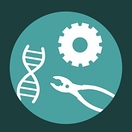As our understanding of genetic circuits has improved, there has been a shift towards standardisation of the design process. This entails the creation of a library of standardised parts like promoters, terminators and protein tags of different strengths that are interchangeable and have compatible ends to be joined into desired sequences (Beal et al. 2020). The resulting transcriptional units can then be joined to form more complex genetic circuits as appropriate for the desired application. This allows researchers to focus on higher-level experimental design rather than being preoccupied with technical details resulting in more complex circuits.
Various papers detail the many repositories and toolkits available to put these parts together. However, the majority of these focus on bacteria with fewer parts and toolkits available for eukaryotic organisms such as Saccharomyces cerevisiae. Even so, the yeast community has remarkably managed to develop DNA toolkits which have been widely adopted, allowing the users to design and build many applications using S. cerevisiae.
The BioBrick assembly method is used in the iGEM Registry of Standard Biological Parts, and is one of the largest collections of parts in synthetic biology-based on using the golden gate assembly method. While the database is focused mainly on bacteria (i.e. E. coli), there is a small database of less than 100 characterized S. cerevisiae parts available. This makes up the S. cerevisiae kit rather small in relation to the over 20,000 parts documented in the iGEM registry. The extraordinary feature of the iGEM registry is that it is made by the contribution of thousands of iGEM teams that participate in the competition each year, highlighting the powerful impact that coordinated global efforts can achieve. Nevertheless, an inherent disadvantage is that the parts are unevenly poorly characterised and often the characterisation has been done using different non-standardized methods.
One of the most widely used toolkits for yeast synthetic biology is the modular cloning system, or MoClo, which uses Golden Gate assembly with just two restriction enzymes, BsmBI and BsaI, to create a unique 4-base overhang and allows for multi-part assembly reactions (Lee at al. 2015). The authors proposed in their initial paper proposed a 96-part starter library with highly characterized parts characterised such as promoters and terminators (Figure 1).

The widely adoption of the yeast MoClo toolkit could be attributed to containing a standardized characterization of each part while maintaining its simplicity and accessibility using single a 96 well plate to distribute all the selected DNA parts. Furthermore, the use of assembly connectors allows MoClo parts to be compatible with parts from other toolkits broadening the application of the toolkit.
While other toolkits focused on the assembly of a plasmid vector with the desired constructs, there has been an emergence of CRISPR/Cas based toolkits focusing instead in the integration of the desired sequence directly into the yeast genome such as the one described by Reider et al. (2017). This avoids problems with variable copy number when transforming yeast cells with plasmid constructs. A total of 70 characterized parts were developed in the initial design, including 23 Cas9-sgRNA plasmids, 37 promoters and 10 protein tags. In this toolkit, parts are designed with the provided CASdesigner web tool, which assists the user in the selection of parts for their application, and designs the primers needed to join the parts based on homologous recombination. It also helps to design cassettes to target selected characterized chromosomal sites as shown in Figure 2.

Although not many toolkits have been developed for the S. cerevisiae community, it may have indirectly contributed for the users for more widely adopt a certain toolkit like the Yeast MoClo (Lee et al., 2015). Further challenges involve the characterization of more DNA parts, specially terminators, as well as the dynamic characterization of promoters such as the work that has been recently done in the YeastFab assembly toolkit (Guo et al. 2015; Garcia-Ruiz et al. 2018). There is also a clear shift moving towards genome engineering using CRISPR Cas tools instead of relying on the use of plasmids, and recent toolkits have emerged to standardize the different needs of such an approach.
References:
- Beal et al. The long journey towards standards for engineering biosystems.EMBO Rep. 2020. 6; 21(5). 10.15252/embr.202050521.
- Lee et al. A Highly Characterized Yeast Toolkit for Modular, Multipart Assembly. ACS Synth. Biol. 2015, 4, 975−986.
- Reider et al. A Cas9-based toolkit to program gene expression I Saccharomyces cerevisiae. Nucleic Acids Research. 2017, 45, 496-508.
- Guo et al. YeastFab: the design and construction of standard biological parts for metabolic engineering in Saccharomyces cerevisiae. Nucleic Acids Research. 2015. 43, 88-89.
- Garcia-Ruiz et al. YeastFab: High-Throughput Genetic Parts Construction, Measurement, and Pathway Engineering in Yeast. Methods Enzymol. 2018, 608. 277-306.
Emma Wattsa, Leonardo Rios Solisa,b*
aCentre for Synthetic and Systems Biology (SynthSys), University of Edinburgh, King’s Buildings, Edinburgh, United Kingdom
bInstitute for Bioengineering, School of Engineering, University of Edinburgh, King’s Buildings, Edinburgh, United Kingdom
* Corresponding author: Dr Leonardo Rios Solis (E -mail: Leo.Rios@ed.ac.uk; Telephone: +441316513561)
